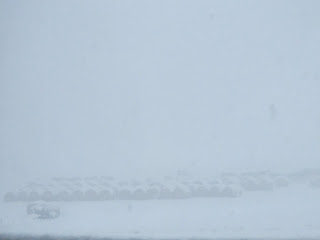Shelter

Do the Chugwater horses have shelter? Yes. Do they use it? No. Not at all. Not on windy days or rainy days or in hail or snow. They have access to a large loafing shed and multiple windbreaks around the property, none of which are used by them. In discussing facility expansion and improvement, a large run in building came up, as did installation of many more loafing sheds, but all were vetoed for the moment. That's not to say that they will never be built, but for now we're staying with the status quo. Because we use dirt bikes to check the horses daily, we also get a feel for how the ranch performs year round. We have a lot of terrain, ranging from rolling hills to deep ravines and valleys. Low and behold, the valleys are noticeably warmer than anywhere else on the ranch, including the windbreaks and loafing shed. The horses prefer the valleys shaped like bowls with hills on all sides. In the worst of weather, they tuck into the steepest of hills. These must be protected b...







.jpg)











